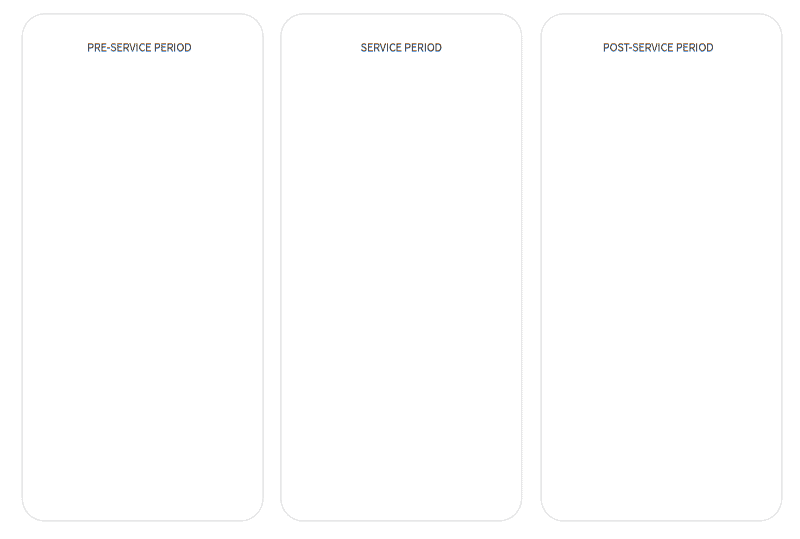Customer Journey Map Introduction
The Customer Journey Map, also known as CJM, is used to empathize with the customer, to optimize customer processes and services and to develop innovative concepts. A Customer Journey Map is a visual representation of the customer experience in all contact moments and via all channels. In addition, it offers insight into the pain points, wishes and needs of the customer.

This information is important to respond to the customer and to the success of products or services that the company provides. The basis of a CJM consists of a specific persona and the steps that are taken from start to finish (before-during-after), including highs and lows.
Due to many potential side paths in the customer’s journey, the basic CJM can be expanded according to your own insight and desire. After going through all the steps, you will see where and at what time of the journey the customer does not meet his expectations. This shows where improvements can be made in the customer experience and where an optimal user experience can be designed.
For companies, the CJM is useful in the strategy phase, concept and design phase and the development and operation phase. A CJM can also help solve a specific problem.
This method has been used since the 1990s, when marketing and sales automation emerged.
Example Phases Customer Journey Map

Template
Download Template
Customer Journey MapOnline Templates
Executing the Method
-
Step 1: Mapping the company
To start with the Customer Journey Map, it is good to start by answering the questions; what does the company want and what can it do and what makes the company unique? Why do you do what you do as a company? The Why question is very important, as it creates self-awareness, which increases the chances of success.
-
Step 2: Target Audience and Persona
Determine which target groups find the company's product or service interesting. Choose a persona (fictional person) that represents the target audience. If there are multiple target groups, use a persona for each target group. Take on the role of the persona and collect information, for example by holding focus groups or in-depth interviews.
-
Step 3: Contact Moments List
List all points of contact with the customer called touchpoints. Think of all possible interactions that the customer has with the company based on before-during-after contacts.
-
Step 4: Create Customer Journey Map
Determine in the team which elements the Customer Journey Map should display. For example, choose the ideal version, the current customer journey, which process to investigate, a day in the life of the persona or how the brand adds value. Also consider how extensive the Customer Journey Map should be.
-
Step 5: Complete the Customer Journey Map
Collect all relevant information. The goal of the customer, the touchpoints, the feelings and emotions of the customer and what an impact it has on the customer and his "journey". Place this information with the corresponding steps (before-during-after). Use the table from the template as a guide, complete where necessary. Then draw the table on paper (A3 or larger) to categorize the information.
-
Step 6: Analyze and Take Action
Analyze every step in the customer journey. See per phase which feelings, problems or questions the persona has. Then write down as many solutions as possible. Create an action plan to optimize the customer experience or process, or to further develop the concept.
Necessities
Advantages & Disadvantages
-
The CJM provides a simple way for identification with the customer and the company, product or service is viewed from a different perspective.

